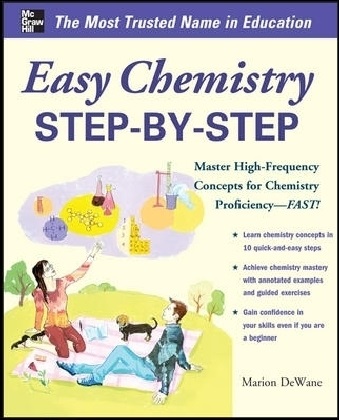Read more
Informationen zum Autor Marian DeWane has taught chemistry in secondary and post-secondary schools since 1976. She has been involved in all levels of teaching chemistry, including curriculum development; exam writing; exam grading, including being a Question Leader for the AP exam; and presenting workshops for teachers. Klappentext You've come to the right place for the solution to learning chemistry quickly and easily! Easy Chemistry Step-by-Step is based on the idea that the quickest route to learning this subject isbuilding a solid foundation in the basics. You won't find a lot of pointless discussion; instead, you get an original, step-by-step approach to mastering chemistry, with important concepts linked together by clear explanations, appropriate exercises, and helpful answers. The first steps introduce you to the fundamentals of chemistry, allowing you to identify common mistakes almost immediately. Gradually, a series of interconnected steps takes you from simple to more challenging concepts at your own pace, with a variety of increasingly difficult exercises to practice what you've learned. After working through these exercises, you'll have a better grasp of thesubject along with the knowledge and skills you need to handle chemistry with confidence. Easy Chemistry Step-by-Step features:A unique building-block approach to mastering chemistryDown-to-earth explanations of important conceptsHelpful notes to avoid common misstepsExercises to help test what you've learned and measure progress Zusammenfassung Focuses on the idea that the quickest route to learning this subject is building a solid foundation in the basics. This book features a lot of pointless discussion; instead! you get an original! step-by-step approach to mastering chemistry! with important concepts linked together by clear explanations! appropriate exercises! and helpful answers. Inhaltsverzeichnis Preface 1 The Elements on the Periodic Table Element Names and Location on the Periodic Table Origins of Element Names Types of Elements Element Phases Diatomic Elements 2 Atomic Structure and Atomic Mass Proton Number Electron Number Neutron Number Average Isotopic Mass Overall Structure 3 Ionic Compound Naming and Formula Writing Naming Ionic Compounds Writing an Ionic Formula from the Name 4 Covalent Compound Naming and Formula Writing Covalent Compound Naming from a Formula Covalent Compound Formula Writing from a Name 5 Acid Theories, Naming, and Formula Writing Naming Acids with Anions That End in -ide Naming Acids with Anions That End in -ate Naming Acids with Anions That End in -ite Naming Acids from Their Formula Determining the Formula of an Acid from the Name 6 Physical and Chemical Properties and Changes Physical and Chemical Properties Physical and Chemical Changes Intensive and Extensive Physical Properties of Matter Combined Properties Review 7 Measurements and Significant Figures Measurements Significant Figures Rounding a Value Calculations Involving Many Steps Units, Scientific Notation, and Logarithms Changing a Scientific Notation to a Number 8 Density Measurements Needed to Calculate Density Solving for Different Variables by Rearranging the Equation Graphical Means of Determining Density 9 Formula Mass, Moles, and Molar Mass Formula Mass Moles Mole Conversions The Foundational Skill of Chemistry: Mole Conversions 10 Percent Composition Calculating Percent Composition Determining an Empirical Formula from Percent Composition by Mass 11 Balancing a Chemical Equation Counting Atoms of Elements Counting Atoms of Elements with Coefficients Balancing an Equation Balancing Equations of Reactions Written in Words 12 Rules for Drawing Lewi...

